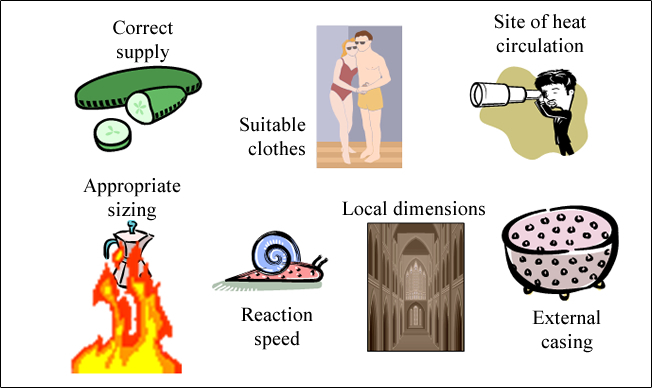Recommendations for treating the air and energy saving heating
- With an outside temperature of zero degrees, it takes just 5 minutes to change the air in the house without the risk of cooling the walls;
- Each room must have its own chronothermostat;
- The chronothermostat must have a weekly setting with at least three settable temperature levels, sensitivity of one-tenth of a degree, interval between intervention and reset of six-tenths of a degree and must allow at least hour by hour management and better half-hour by half-hour;
- Avoid setting a difference of more than 3 degrees between the minimum and maximum temperature settings (by way of example, see the following dispersive cycle);
- Dehumidify the air, if possible.
Dispersive condensation-evaporation cycle of the humidity in the walls:
1. Comfort temperature 19 °C: warm, humid air
2. Decreasing air temperature to 16 °C: the walls are cooling faster
3. Decreasing air temperature to 14 °C: warm humid air and cold walls
4. Decreasing air temperature to 14 °C: humidity condenses in the walls
5. Temperature 14 °C: cold dry air and cold humid walls
6. Increasing temperature to 19 °C: humidity evaporates from the walls dissipating energy
7. Comfort temperature 19 °C: warm, humid air
Energy is wasted continuously re-evaporating the humidity from the walls
Heating Systems
The ingredients for combining comfort with efficiency:


